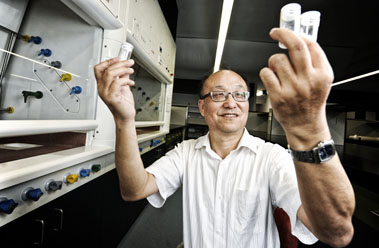
A major meteorite impact on Earth could spell doomsday - or not. To better predict what could be in store if a giant space rock slammed into our planet, scientists have built a new model to simulate the seismic fallout from such an event.
The model predicts how seismic waves would spread through Earth after a meteorite collision. It's the first to take into account the planet's elliptical shape, surface features and ocean depths. In contrast, previous models have assumed Earth is perfectly spherical and featureless, with nothing to disrupt a meteorite's impact.
"After a meteorite impact, seismic waves travel outward across the Earth's surface like after a stone is thrown in water," research leader Matthias Meschede of the University of Munich said in a statement. "For the Earth, these calculations are usually made using a smooth, perfect sphere model, but we found that the surface features of a planet or a moon have a huge effect on the aftershock a large meteorite will have, so it's extremely important to take those into account."











Comment: Corruption in science appears to be widespread - see : The Corruption of Science in America